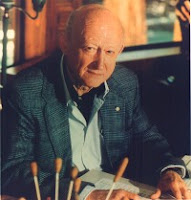Greetings!
A few weeks ago I published a blog outlining
my schema (or model) for teaching basic articulations to beginners based on their prior knowledge (dynamics and note length). One of the comments that showed up from my friend John at
Music Dreams was that, of course, there are many ways to interpret articulations and that this will vary from one composer and situation to the next.
And of course, he's right. I admitted that this schema was for the basics, and the handout I attached says that this is simply a default, and the conductor may ask for something different on a given piece.
But as I was helping to organize a music library a couple of weeks ago, I stumbled onto a jewel - W. Francis McBeth's "Effective Performance of Band Music". Published in 1972 by Southwestern Music Company, it contains some of the best and most straight forward information I have yet to find regarding techniques for improving the band.
It also has an entire section devoted to the interpretation of articulation markings. In it, McBeth surveyed the premier wind band composers and conductors of the day as to their understanding of the five most common articulation markings. If you can find this book, you need to buy it. It should be cheap, and the information from those conductors and composers is worth it alone (although the in depth discussion on achieving the pyramid of sound really seals it, considering this book was the source of that schema).
So for your pleasure and edification, here is a summary of their comments. The conductors and composers who responded include: John Barnes Chance, Frank Erickson, Howard Hanson, Martin Mailman, Vaclav Nelhybel, Vincent Persichetti, Richard Willis, Harold Arnoldi, Frederick Fennell, Joe Barry Mullins, James Neilson, John Paynter, William D. Revelli and Clarence Sawhill. Enjoy!
 Hello again!
Hello again!





